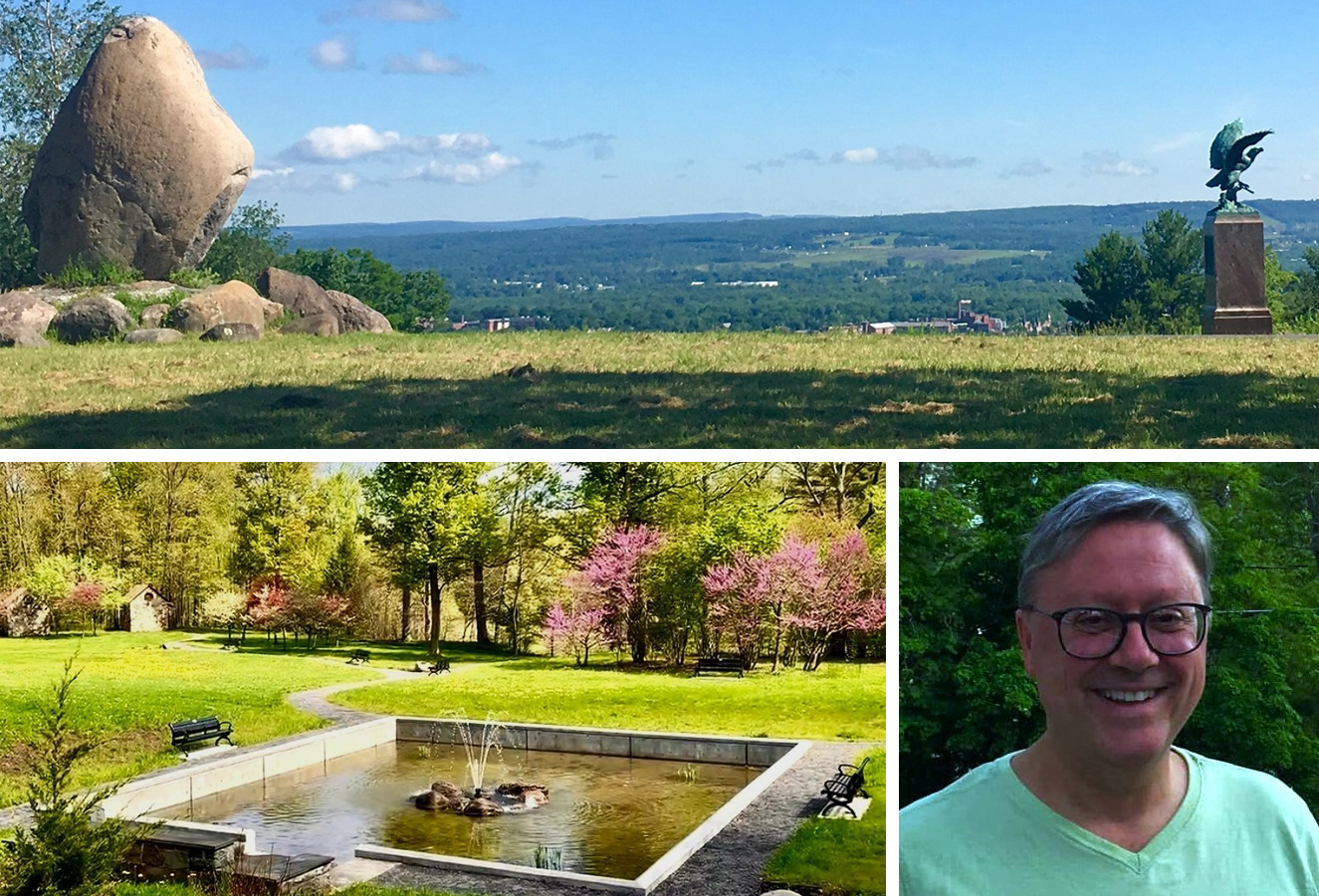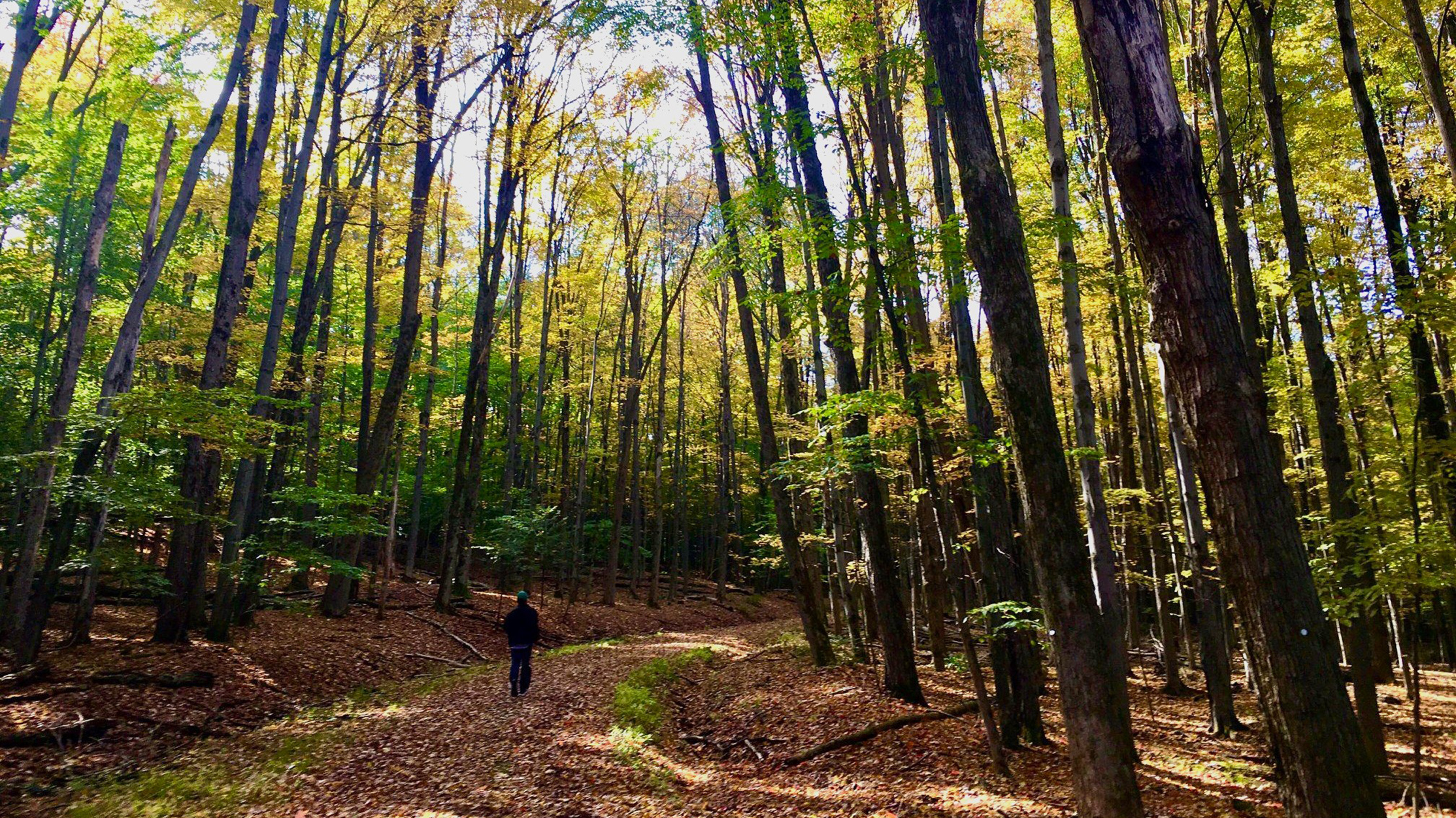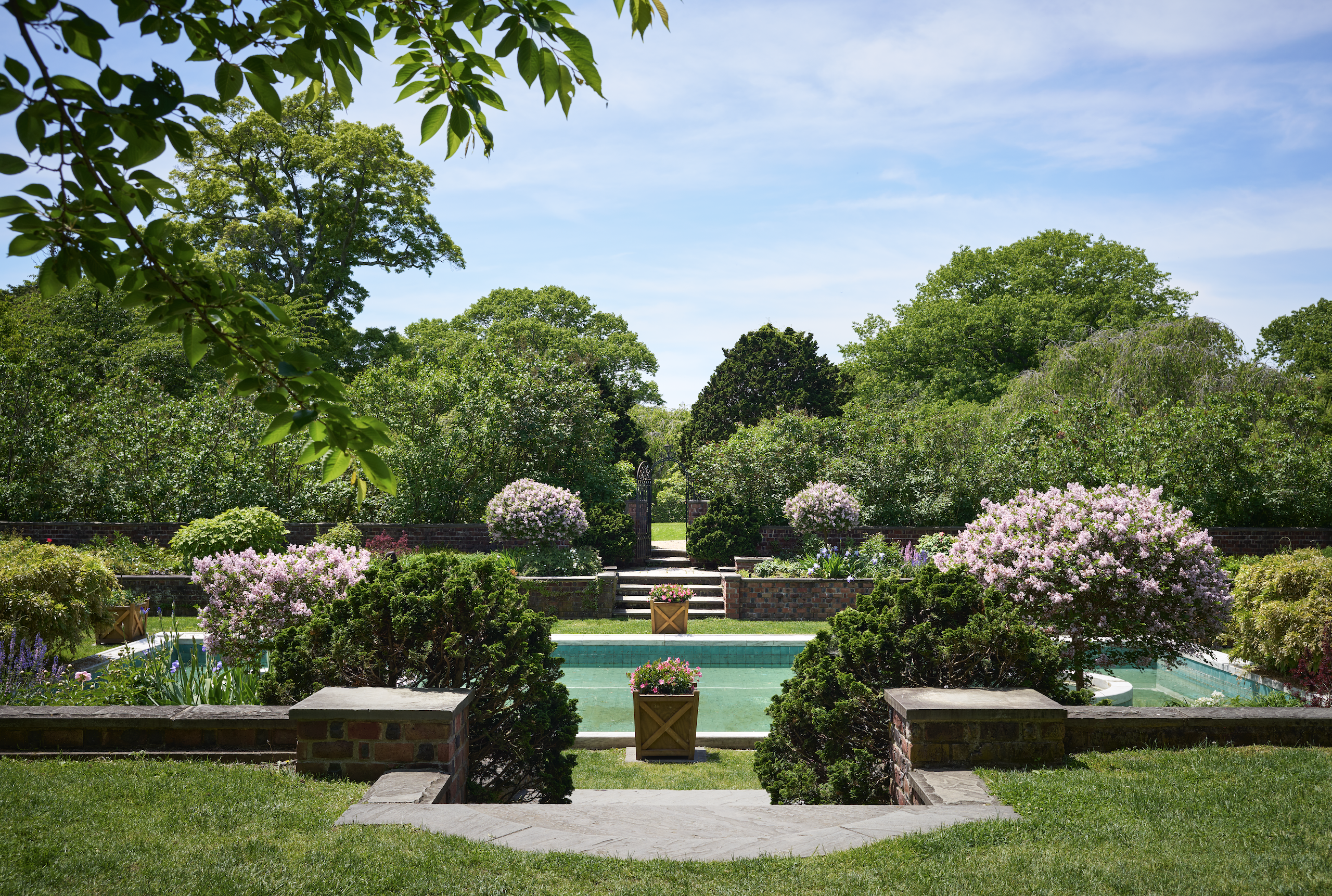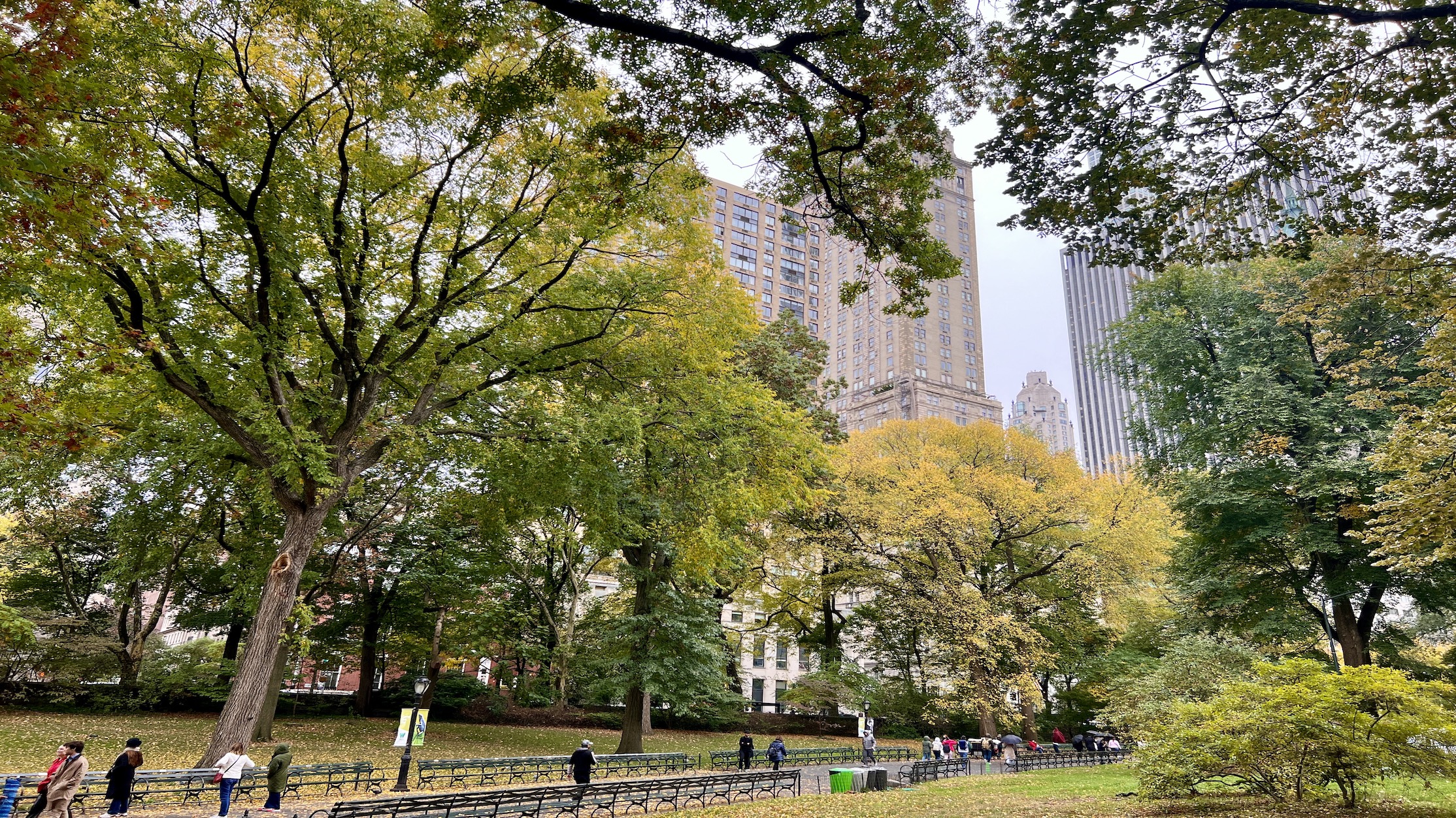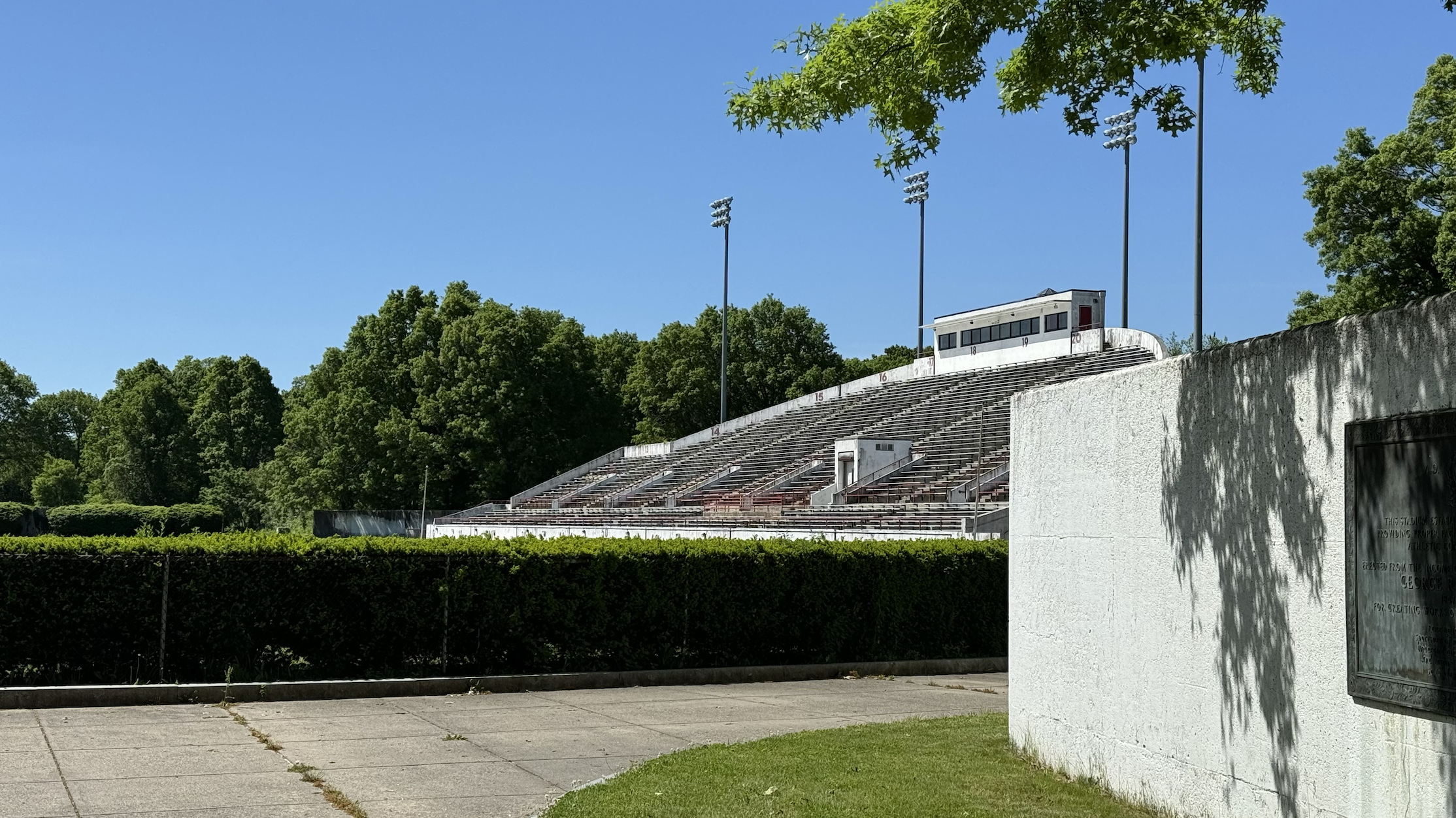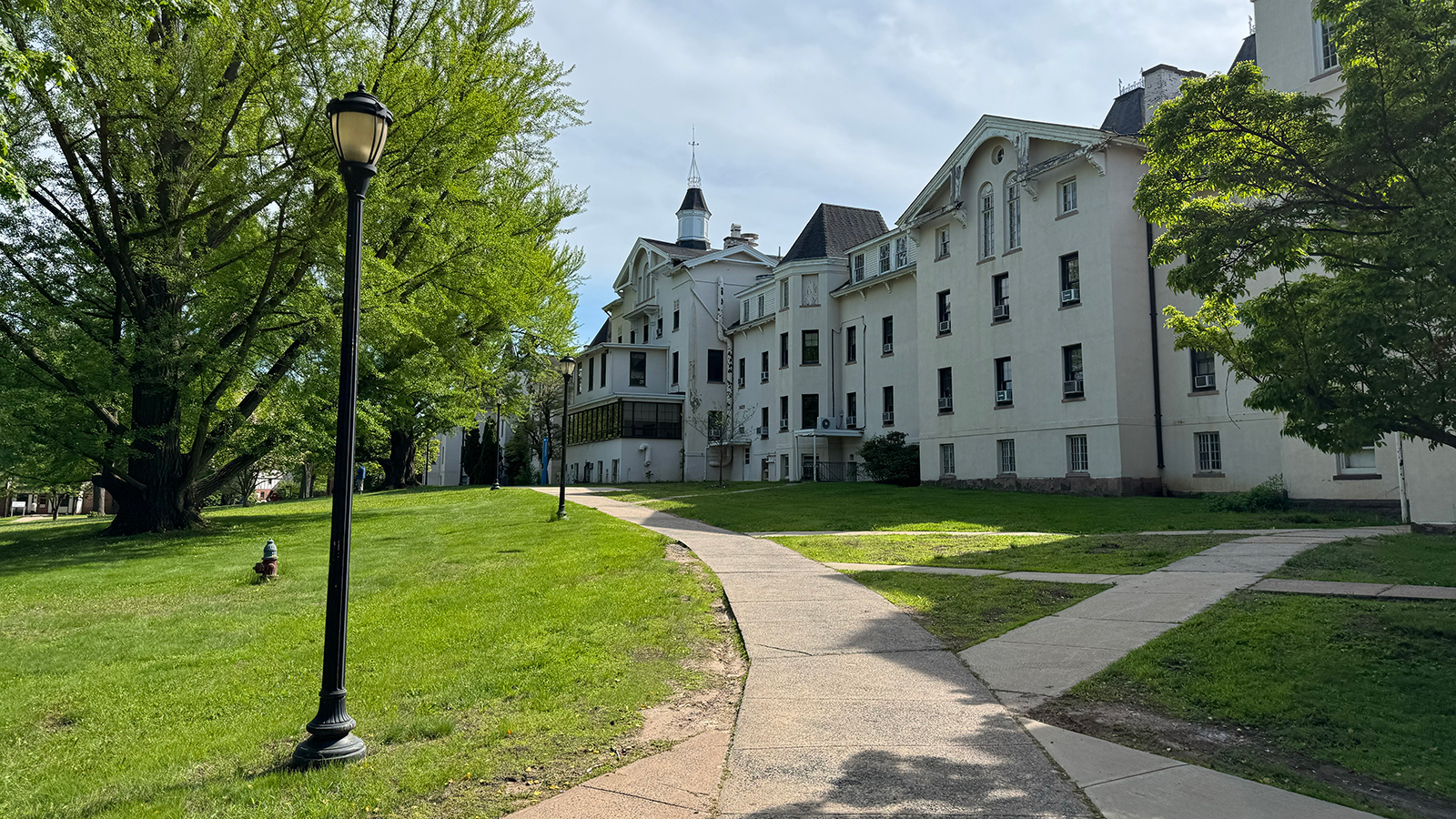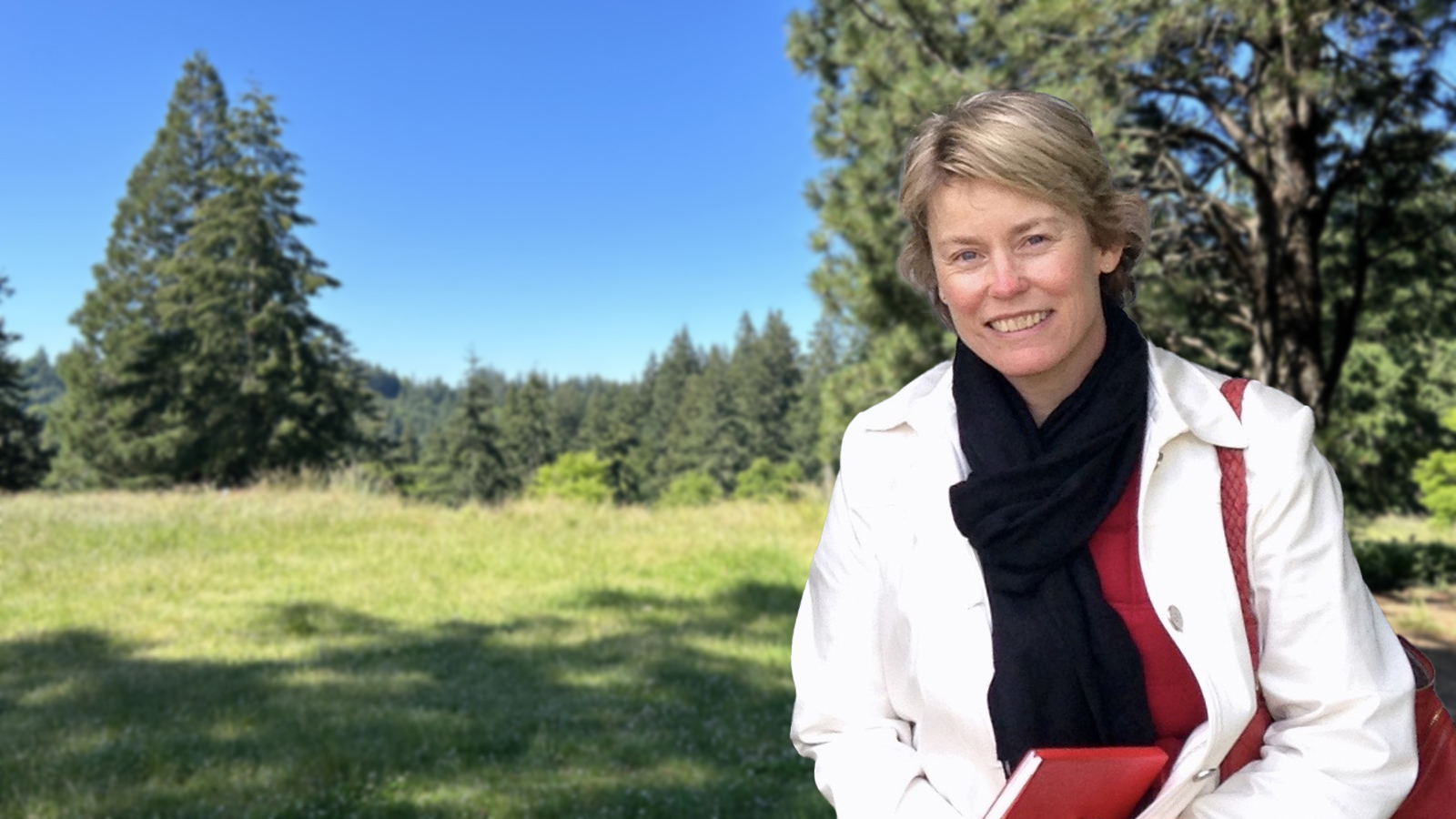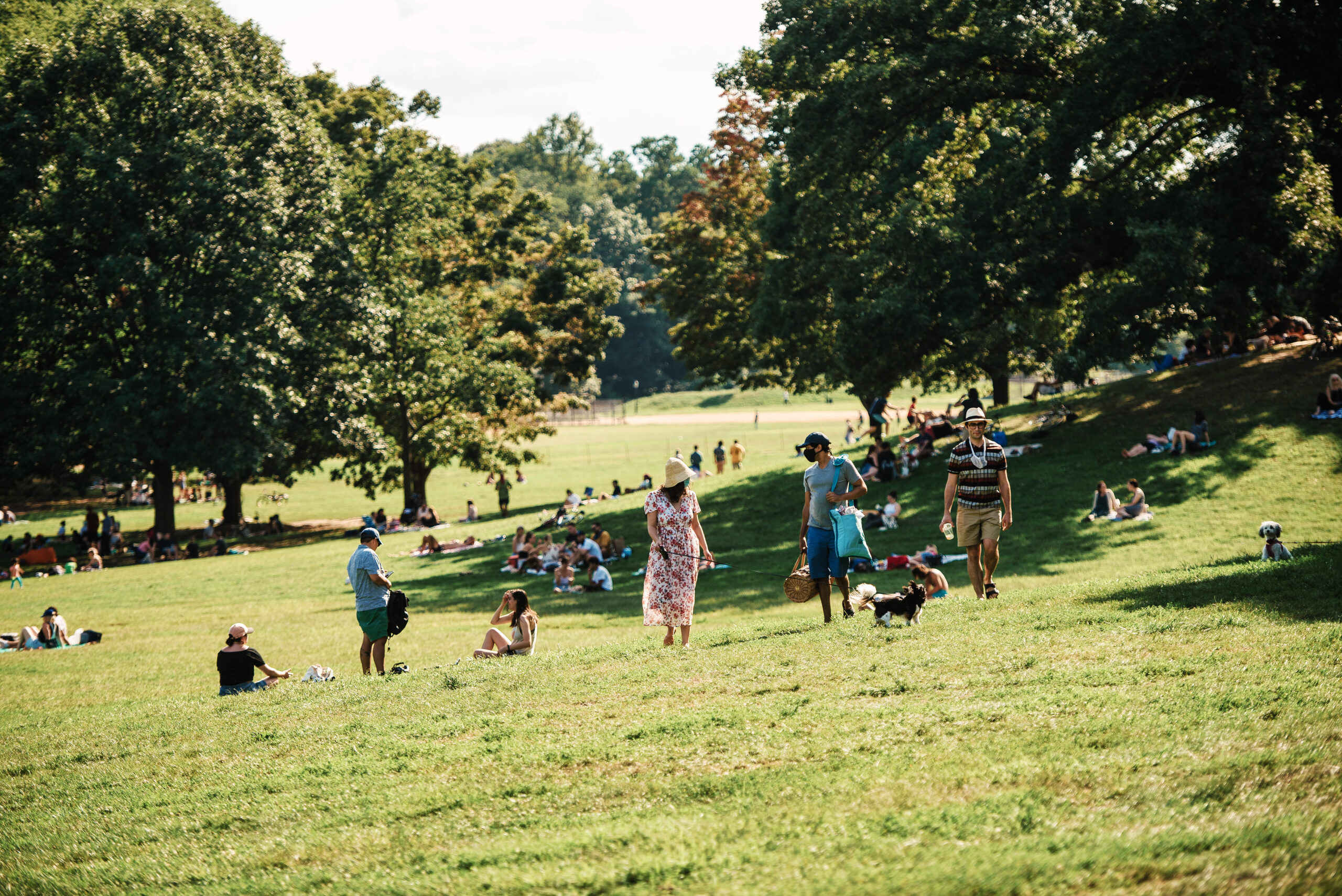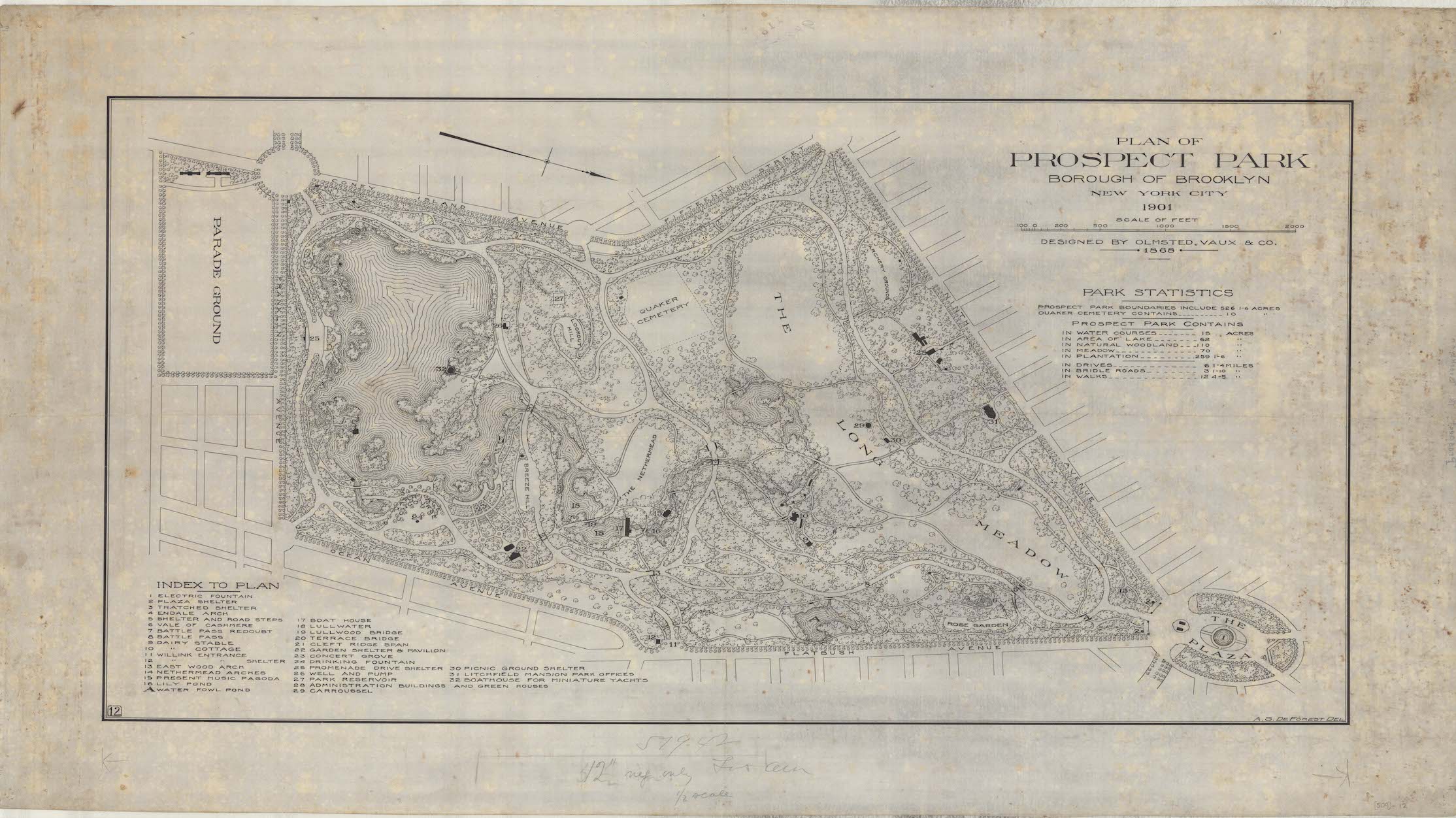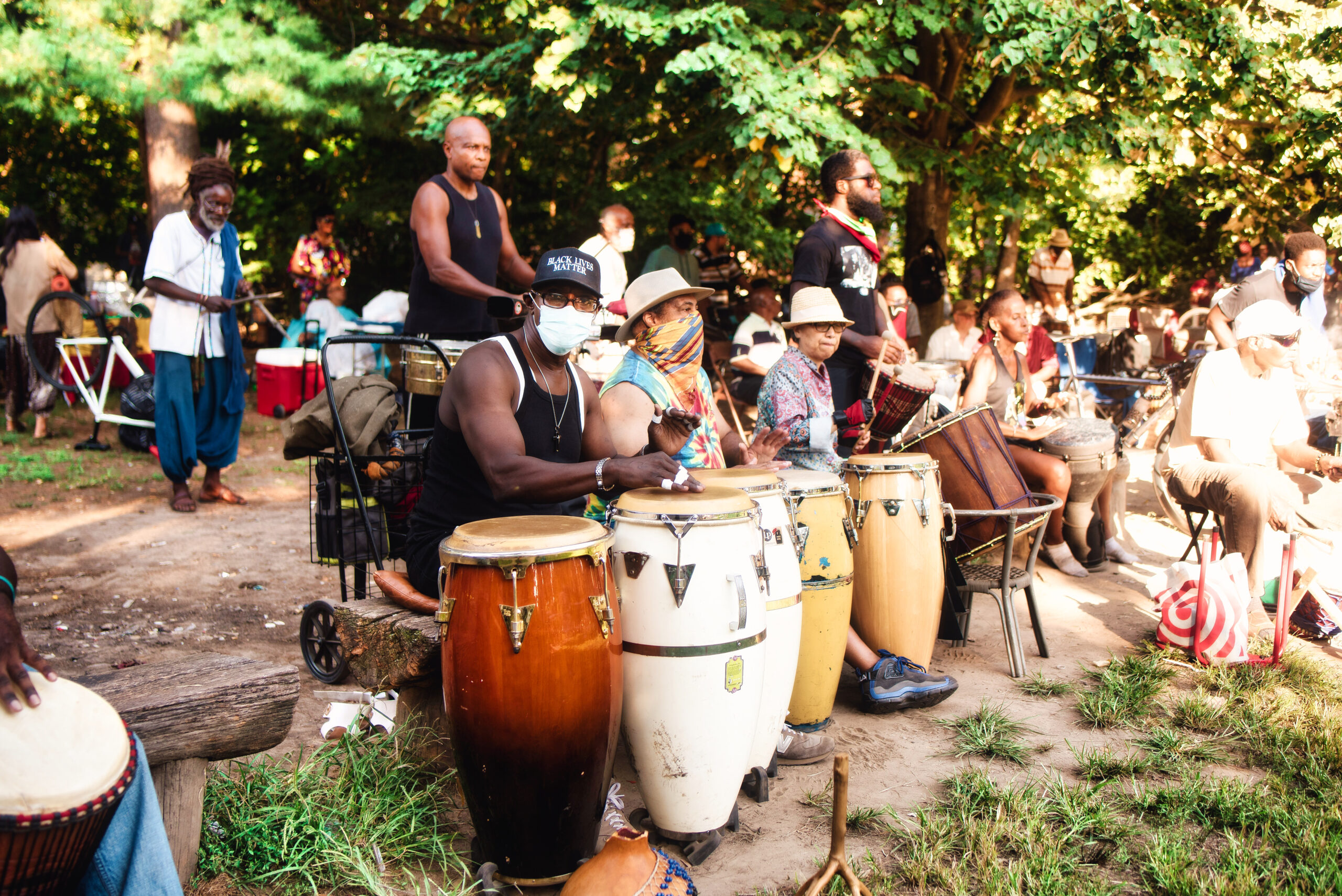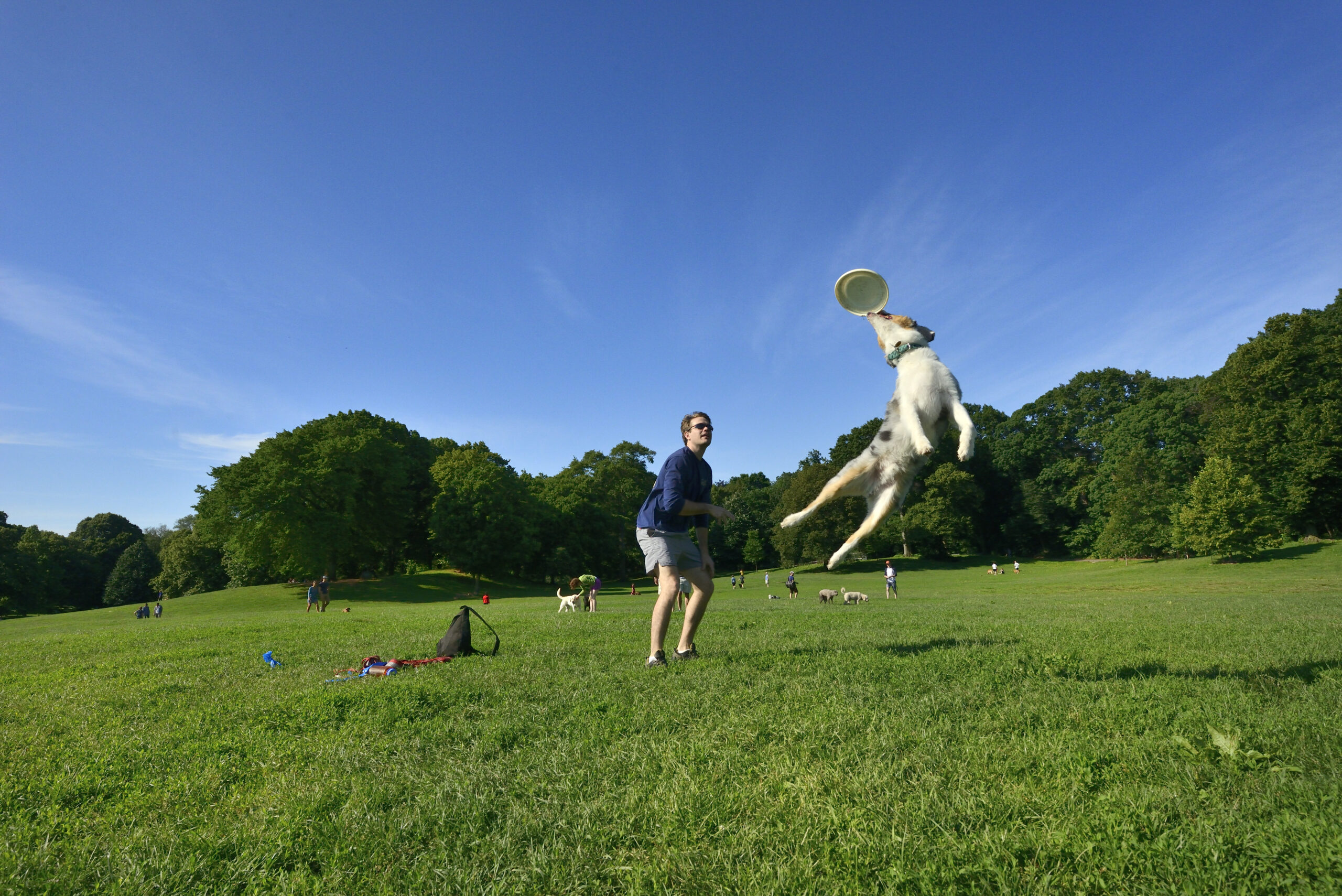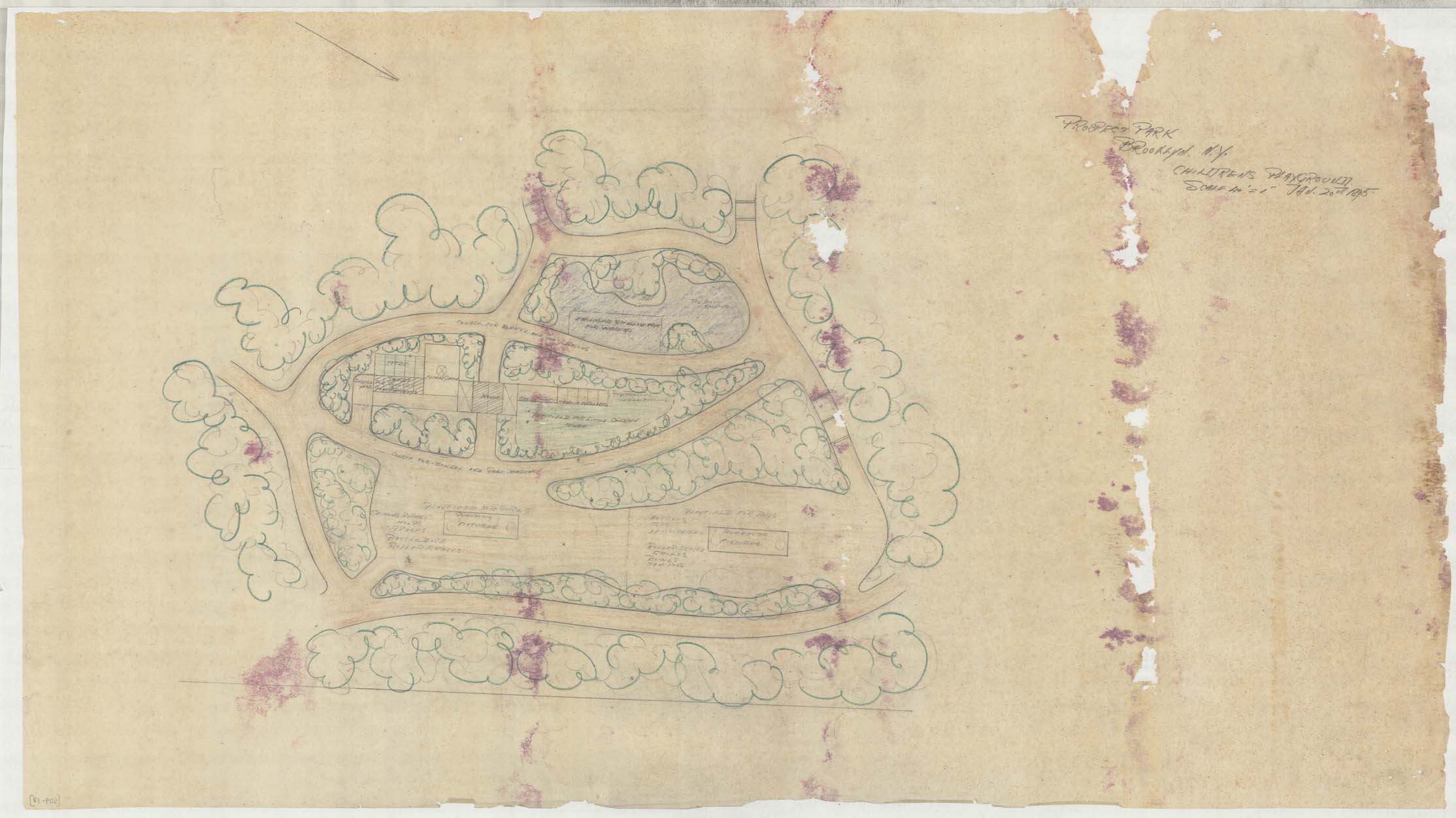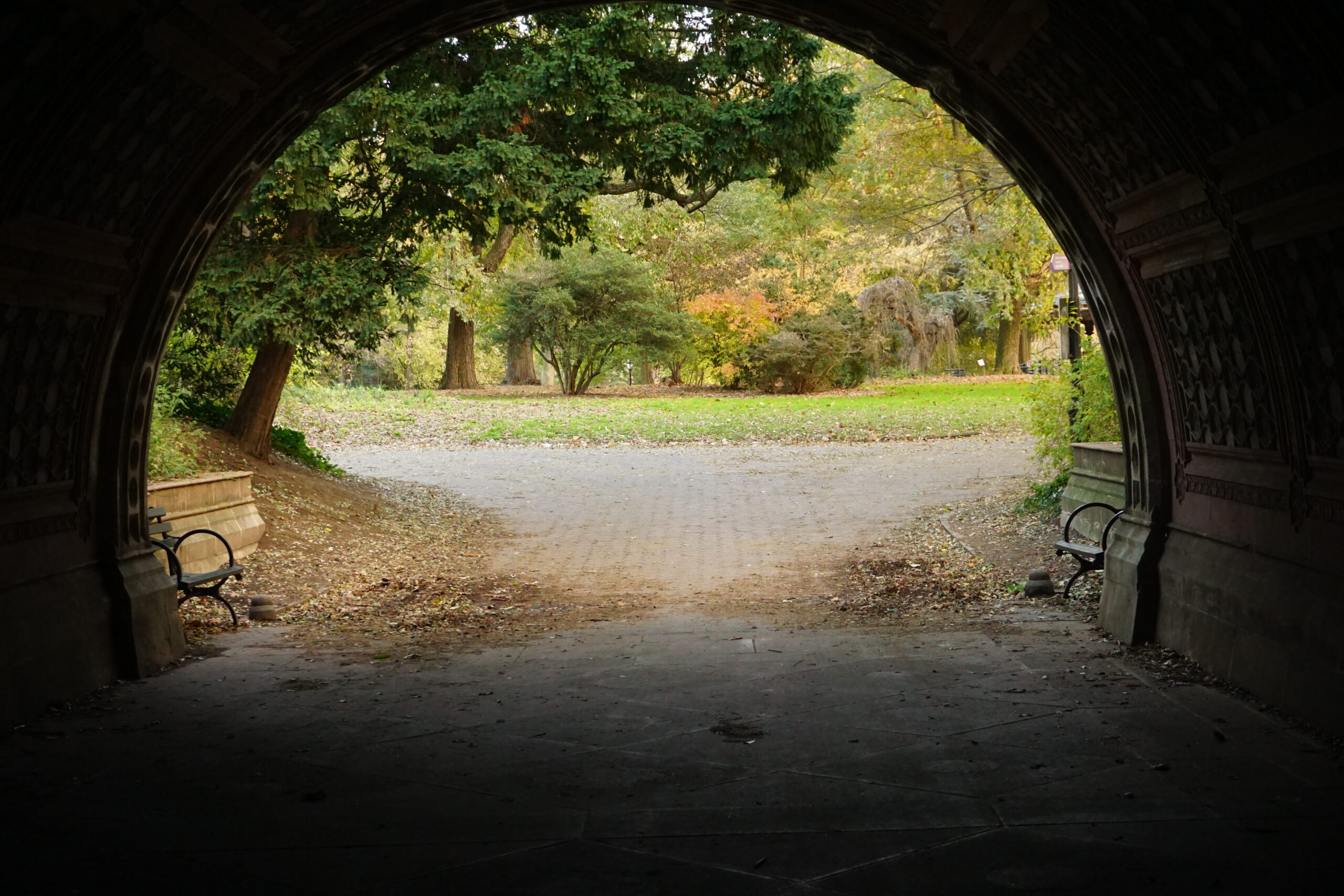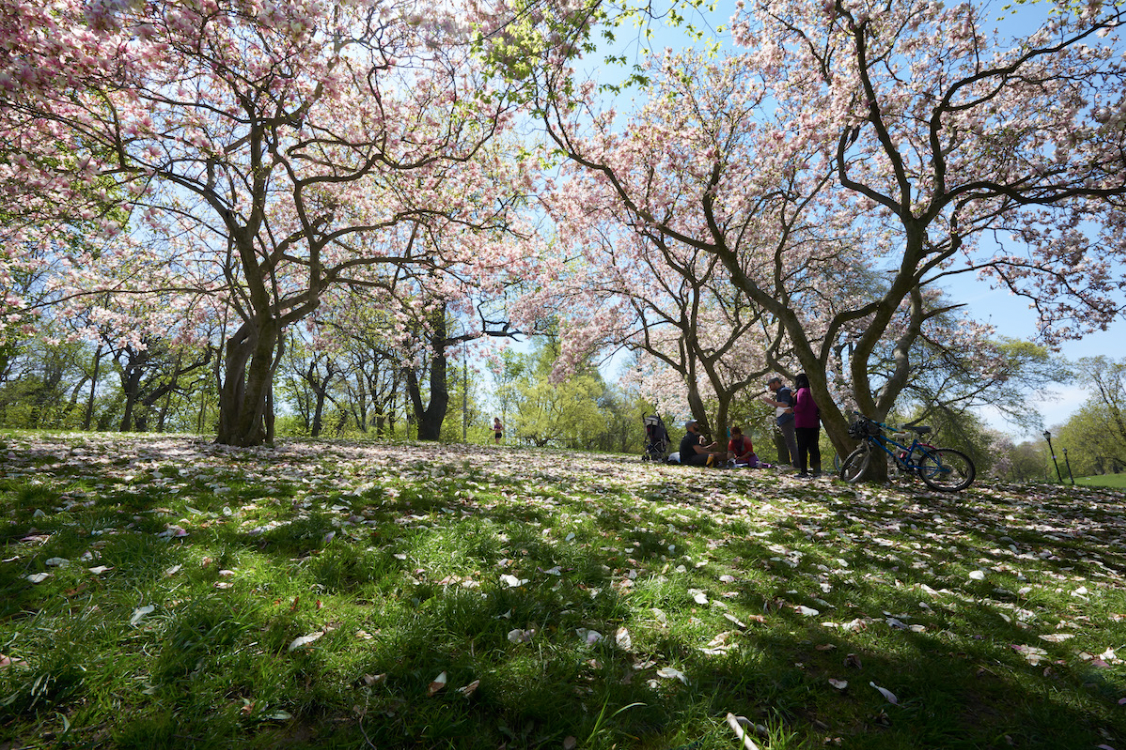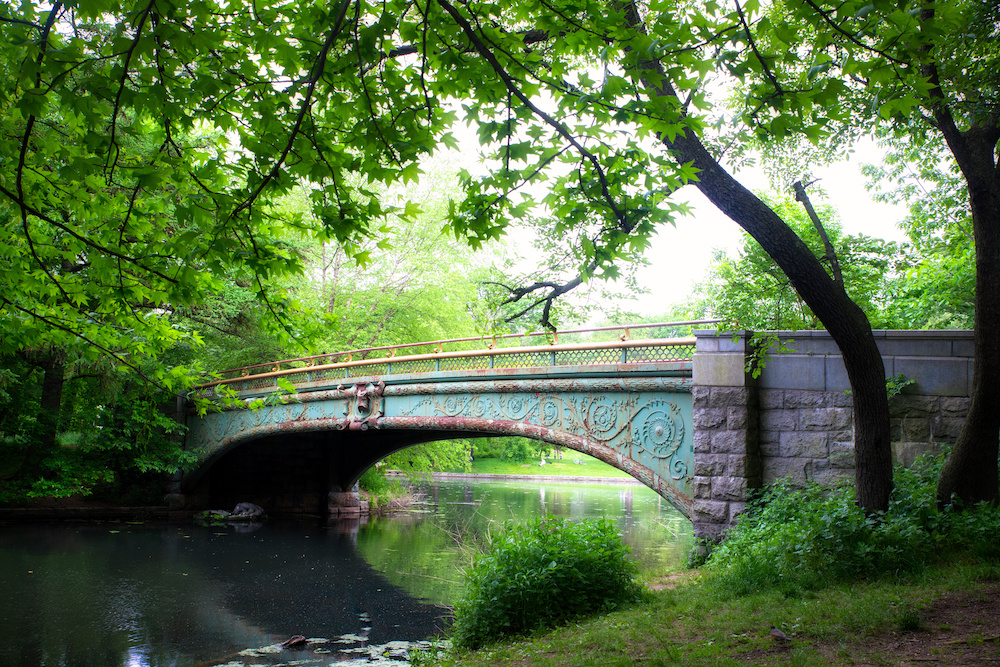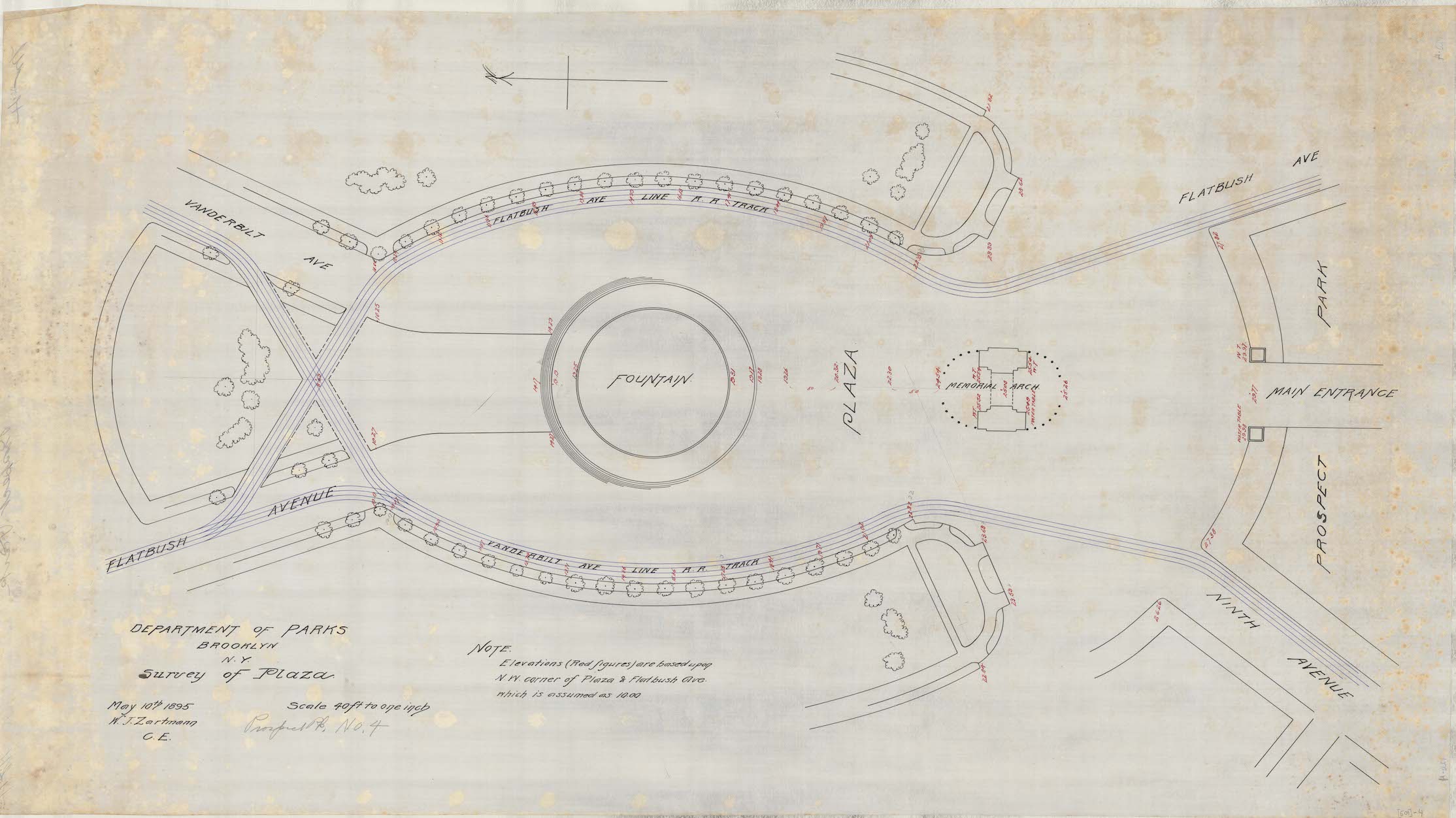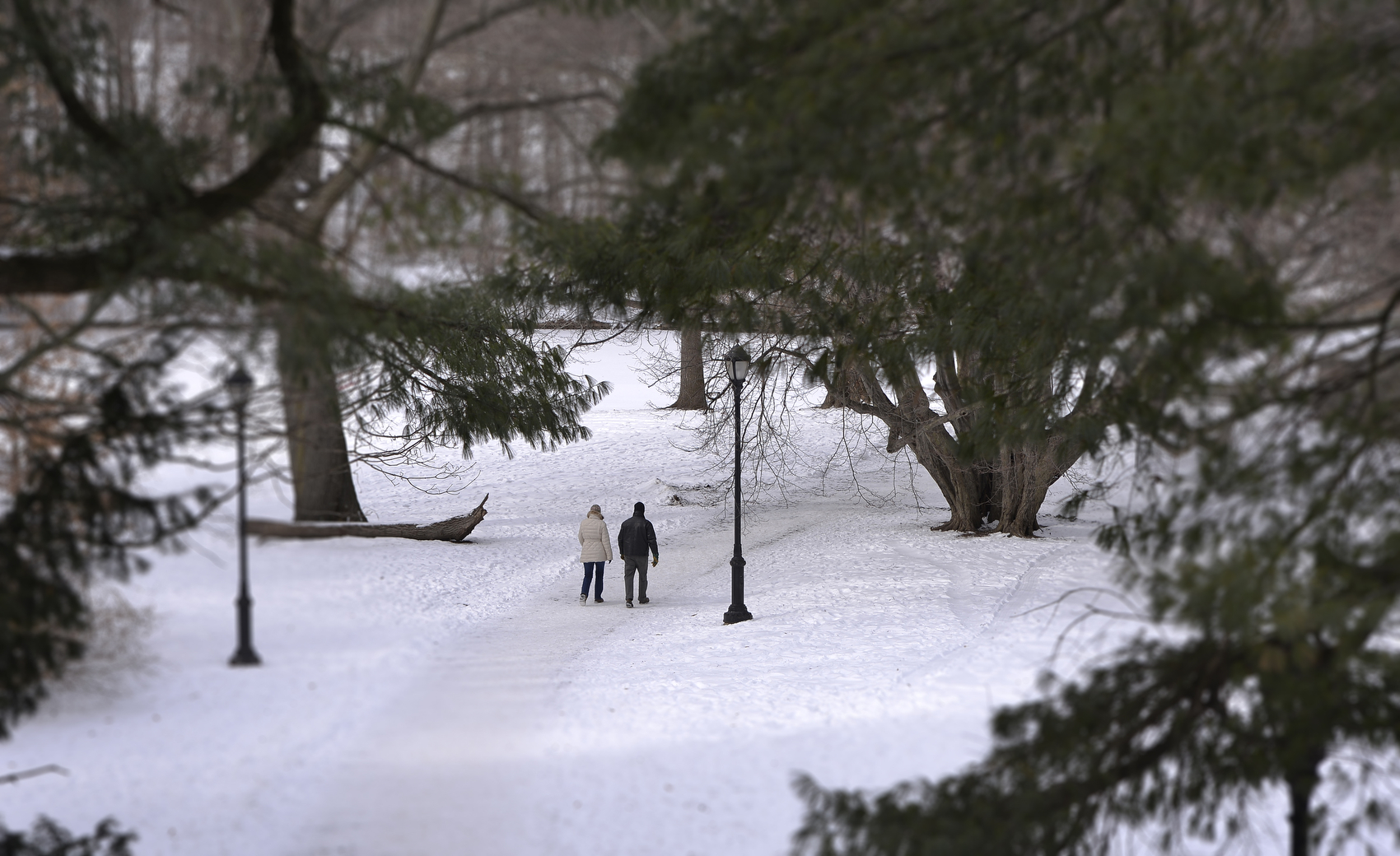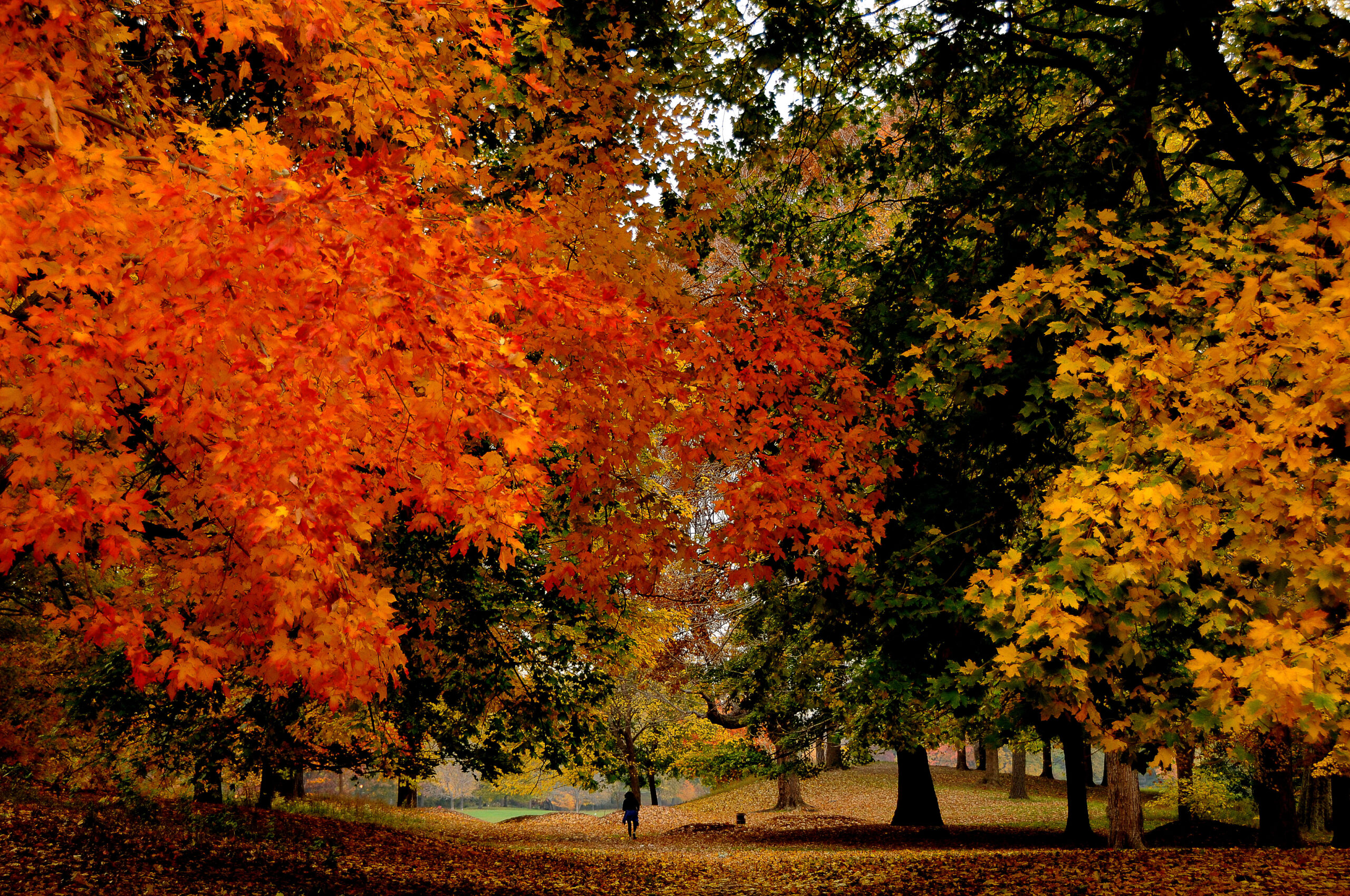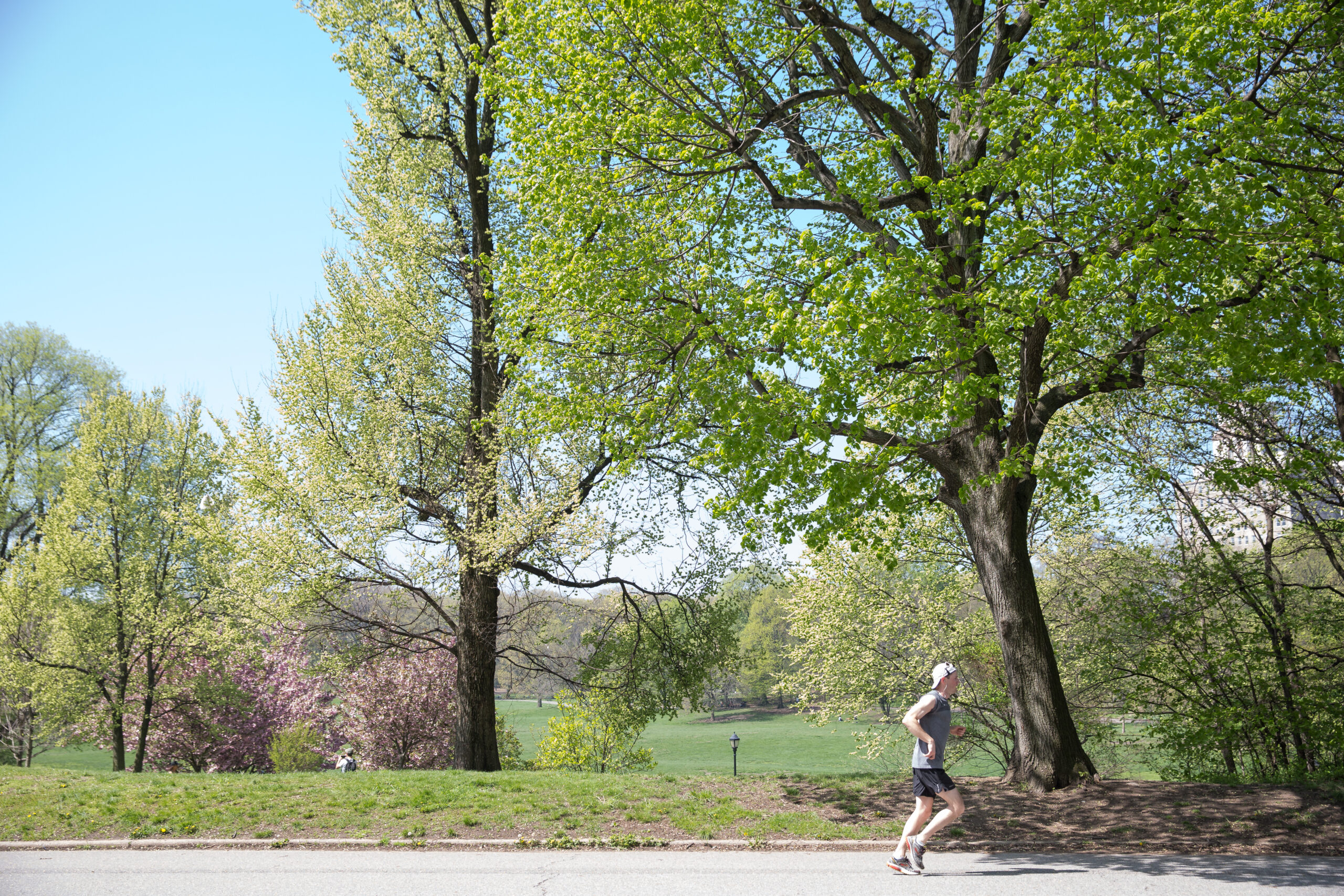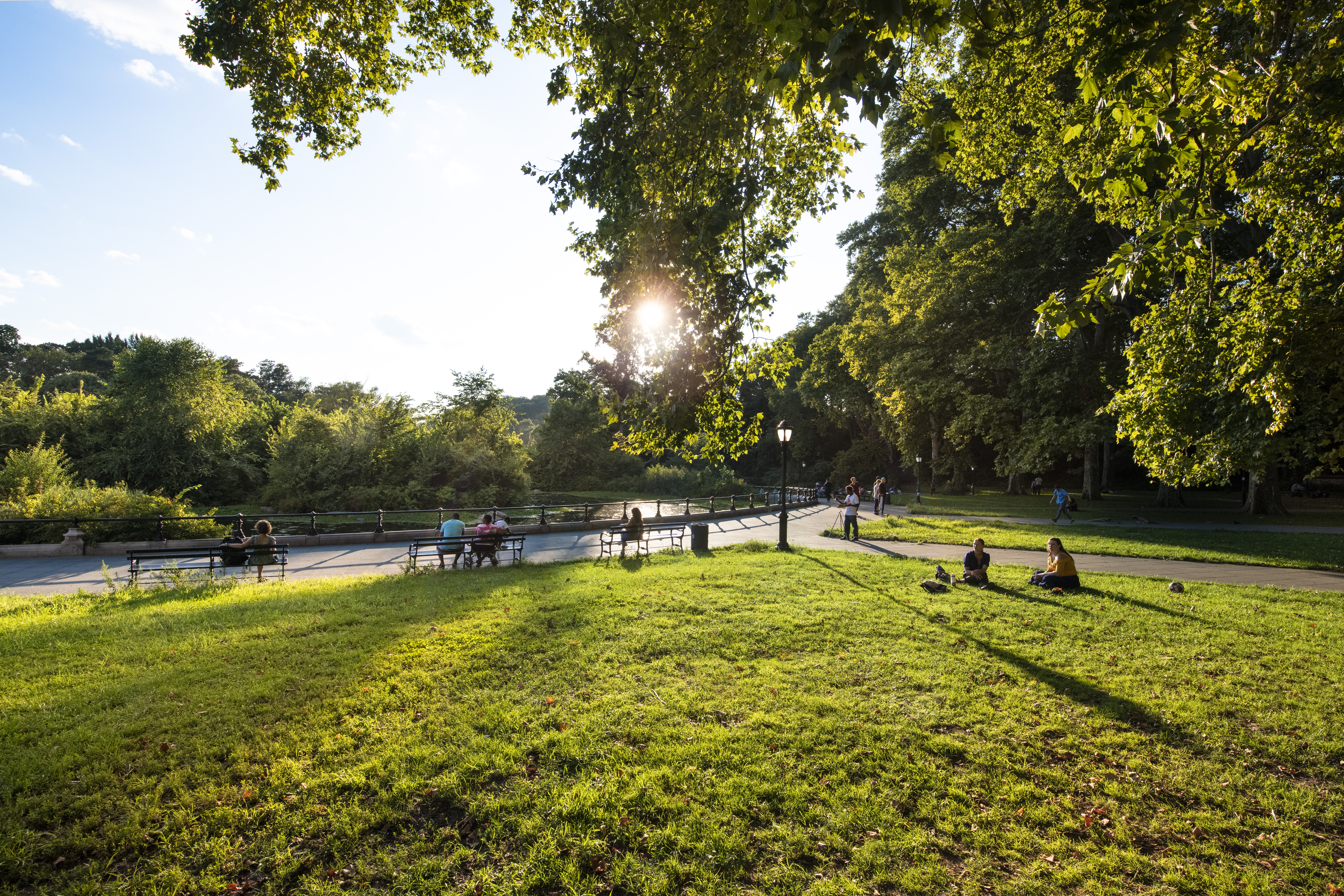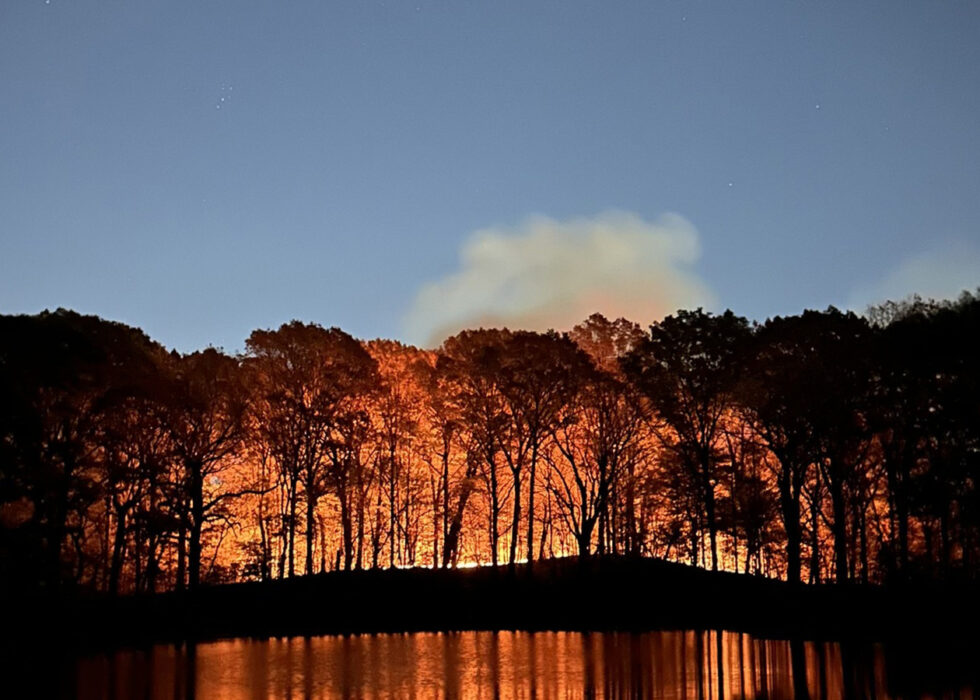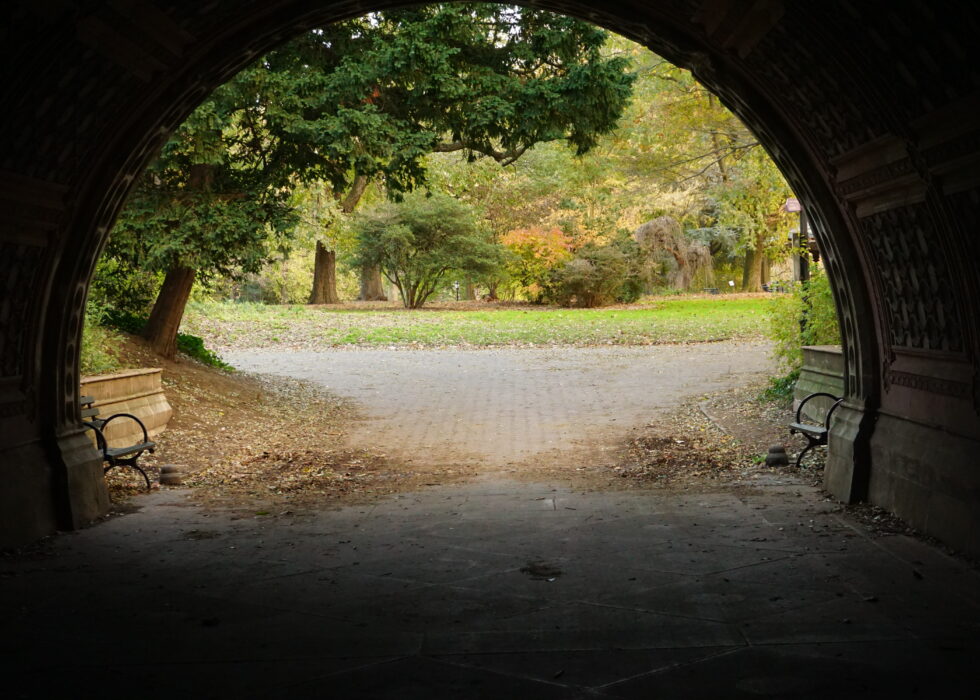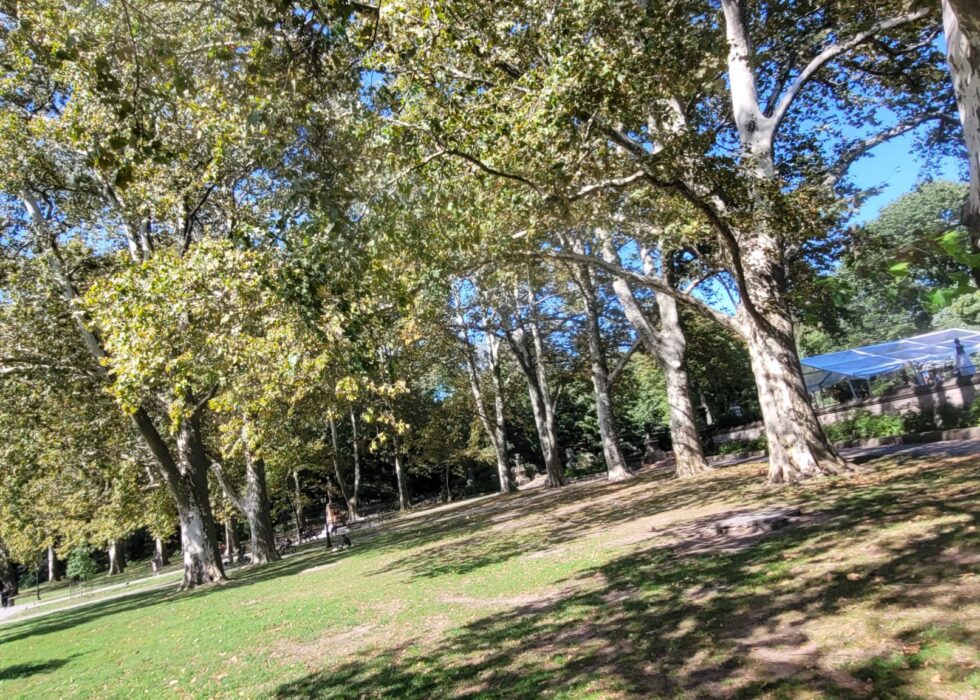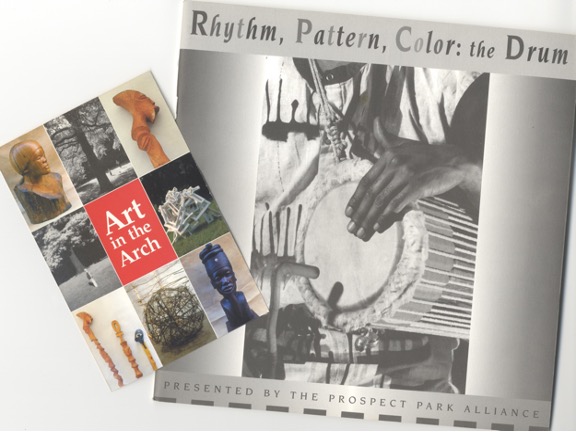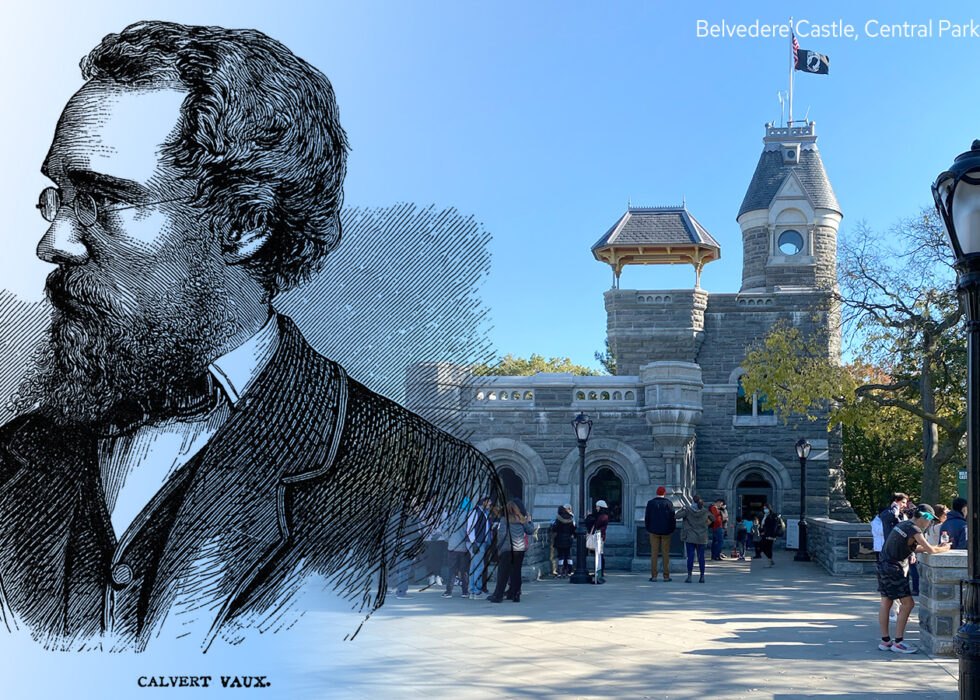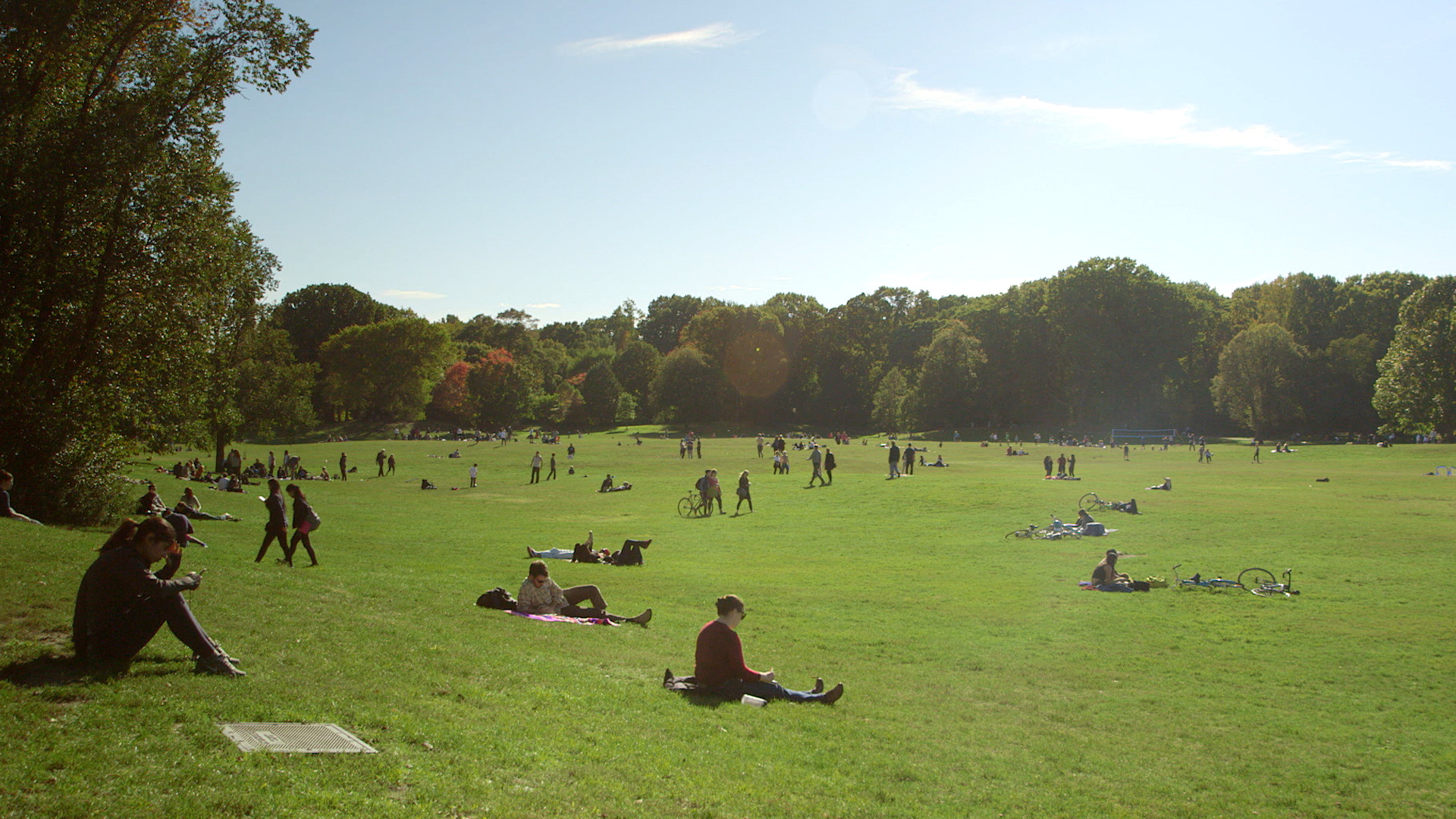
Brooklyn, NY
Prospect Park in Brooklyn, NY, was beloved by Olmsted and revered as one of his most significant projects.
About Prospect Park
In 1866, Olmsted and Vaux were hired to transform 585 acres of remnant forest and rocky farmland into a landscape whose beauty, though manufactured, would nurture the mind, the body and even the fabric of society. At the heart of their design were the 90-acre Long Meadow, the woodland Ravine, meandering paths and a watercourse that featured waterfalls, streams and the 60-acre lake. The Park was officially opened in 1867, even though construction continued for another seven years, and it was an unparalleled success. An 1868 report to the Brooklyn Park Commissioners noted that in July alone there had been more than 100,000 visitors to the incomplete park.
At the turn of the 20th century, Olmsted and Vaux’s original concept of Prospect Park as a pastoral retreat was challenged by planners who were influenced by the City Beautiful movement, which drew from the grand forms of the Greek and Roman eras.
As the New York City Parks Commissioner, Robert Moses leveraged funds available through President Franklin D. Roosevelt’s Public Works Administration to launch a huge number of development projects in Prospect Park, including the creation of the Prospect Park Zoo in 1935, the construction of the Bandshell in 1939 and six new playgrounds around the park’s perimeter.
During the 1970s, New York City was embroiled in a significant fiscal crisis, and the park’s landscapes and structures had fallen into serious disrepair. A group of concerned local citizens began lobbying for responsible stewardship of the park. Mayor Edward Koch, who, with the help of Parks Commissioner Gordon Davis, developed a plan to restore the Park. In 1980, Tupper Thomas was appointed the first Prospect Park Administrator to oversee the restoration efforts.
In 1987, a group of private citizens working with Parks Commissioner Henry Stern founded a new nonprofit organization to work with the City in leading Prospect Park’s rebirth— Prospect Park Alliance. With Parks Administrator Tupper Thomas as president, the Alliance offered a new way for the public and private sectors to join as partners in a common cause.
Since the founding of the Alliance in 1987, much work has been accomplished to preserve the landscape and Olmsted and Vaux’s vision for the park. In the mid-1990s, the Alliance embarked on an ambitious woodlands restoration project in which more than 3,500 cubic yards of topsoil were used to stabilize slopes, 160,000 plants were introduced, and 12,000 cubic yards of sediment was excavated from the pools and streams. To ensure a healthy ecosystem, plants were sourced within 60 miles of Prospect Park, and approximately 35,000 aquatic plants were added to provide food and nesting habitats. Rustic bridges were renovated in the original Adirondack style using white oak timbers with the addition of steel frames. The success of this restoration signaled the growth and evolution of the Alliance.
Today, stewarded by Prospect Park Alliance and NYC Parks, Prospect Park continues to be an international model for the care of urban parks and one of the premier green spaces in the United States, welcoming more than 10 million visits each year. It is home to Brooklyn’s last remaining forest and only lake.




